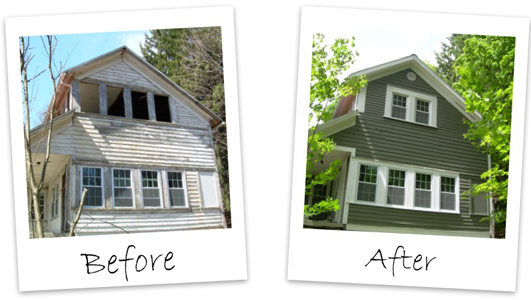How To Get Started In Real Estate Investing

Everyone has seen the late night infomercials, heard the fast talking radio ads and of course watched an episode or two of house flipping shows on cable tv. All provide outrageous claims that real estate is the easiest and best way to build wealth, to work for yourself, or to make yourself rich while only using other people’s money. Yes, people have become rich and quit their day jobs to invest in real estate full time, but don’t fully believe all the get rich quick stories you hear. The real estate pipe dream is very possible, but often much more difficult than what you see on TV or hear about on your radio.
To make it a bit easier for new investors and to shine some light on what you can really expect when making the decision to sink money into homes, I have put together a quick step by step guide to how to get started in real estate investing.
Step 1 – Figure out “Why” – Why do you want to invest in real estate? What Are Your Goals?
Most answers I hear are:
- Make quick money
- Build long-term wealth
- Build cash flow for retirement
- Increase current cash flow and monthly income
- I want to be my own boss
- I want control over how I spend my time
- I want the work flexibility
These are all great answers, but the way you realize your goal will be a different path when investing in real estate. Not all methods of investing will give you the desired results.
For short-term money, the common examples would be: fix and flip projects, wholesaling and reselling rentals.
Fix and Flipping Homes:
This is where you purchase a property that is undervalued, renovate the property, and sell for a profit. This is likely the most common real estate investing and the subject of many reality tv shows. The potential is the largest to make money fast, but also the easiest way to end up in front of your store with a cup in your hand begging for change.
Wholesaling:
This is where you network with property sellers and buyers. Your job as a wholesaler is to acquire access to purchasing properties, and also acquire a network of buyers who are willing to purchase the properties you acquire. There are a bunch of ways to do this effectively.
Fixing Up Rentals and Selling to Other Investors:
This is where you purchase a rental property that is not cash flowing (not turning a profit) and work to get the property to turn a profit, before selling the property to another investor, at a premium.
This looks similar to a fix and flip project but ends up being much different in marketing efforts, as you would be focusing on selling to other investors rather than end home buyers.
For long-term money, a common example would be building a portfolio of rental properties that cash flow per month.
Rental portfolios:
Continually adding to your rental portfolio in an effort to constantly increase the number of assets, and the dollar value of your net assets. The goal is to have cash flow from your rental investments.
Preparing for retirement:
This is where you establish an amount of money you would need in order to retire on a certain amount of income. The idea is to have rental properties that provide a replacement income so you can continue your existing lifestyle without needing to work. Welcome to being a landlord in your golden years.
Increasing current cash flow and monthly income:
A strategy where you use the income from rental properties to add to your current income, but not entirely replace it. Basically moonlighting as a real estate investor and keeping your day job.
Step 2 – Figure Out How Much Capital You Have
Capital, in this case, is how much cash, or liquid assets, you have access to. This includes liquid assets or more solid assets that you can convert into cash to use. Retirement funds can often play a part here.
If your cash is low, you might need to investigate options that allow you to get into real estate investing without large up-front investments. This could include wholesaling and lease options.
If you have decent cash reserves, but not enough to afford an entire down payment you can consider partnering with other investors.
If you have the cash reserves to afford a down payment in your ideal market you can consider flips or rentals.
Step 3 – Check out BiggerPockets.com
Bigger Pockets is a great resource to use for learning about real estate investing. Bigger Pockets is a forum style, so it does not guarantee the validity or experience of the person giving out real estate investing advice.
Step 4 – Research Real Estate Educational Materials
These are three great sources for educational materials: real estate specific books, podcasts, or YouTube videos. All three are great ways to get information about real estate investing options, financing and networking groups.
Step 5 – Attend a local investor meeting (or several).
This can be easy to find if you know how to search. One of the best ways to start is to search your local city/state/county/region and “REIA” or “REIC.”. REIA stands for Real Estate Investment Association. REIC stands for Real Estate Investment Club. These groups will connect you to people who were once in your shoes and just starting out.
Once you have worked through these steps, then give us a call or Contact Us today and we can begin working on the financing you may need to get started in real estate investing. We have helped several new investors get their start and become successful real estate investors. For more info on our financing options check out our Real Estate Investor Loans page.
Eric Weishaar
President | NMLS# 207659

Add Comment